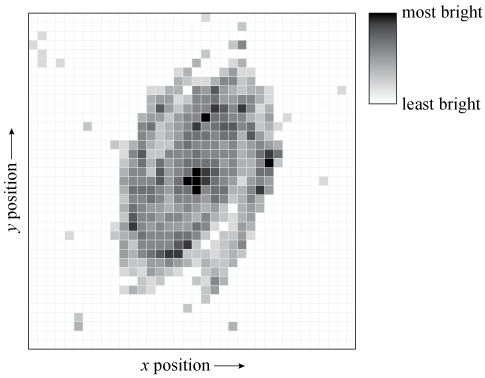1 Images and measurements
Astronomical images record distributions of brightness, and how that depends on an object’s position on the sky. For optical astronomy this is now usually done using CCD (charge-coupled device) detectors. These are similar to cameras in modern mobile phones, although typically larger and/or more sophisticated.
Making images in parts of the electromagnetic spectrum beyond visible light can require less intuitive methods, such as interfering electric signals together from multiple antennae to produce radio wavelength images. But however an image is made, the basic end result – as shown in Figure 1 – is a two-dimensional (x, y) array of pixels: a grid that records the brightness at related locations on the sky.

Additional information, such as the astronomical coordinate system and details of when the observation was made, is typically stored within the image file as metadata.
We need to employ careful methods to make measurements from images such as Figure 1 if we are to make reliable inferences about stars and galaxies. In this section, you will examine how these measurements are made, and what they can tell us.
